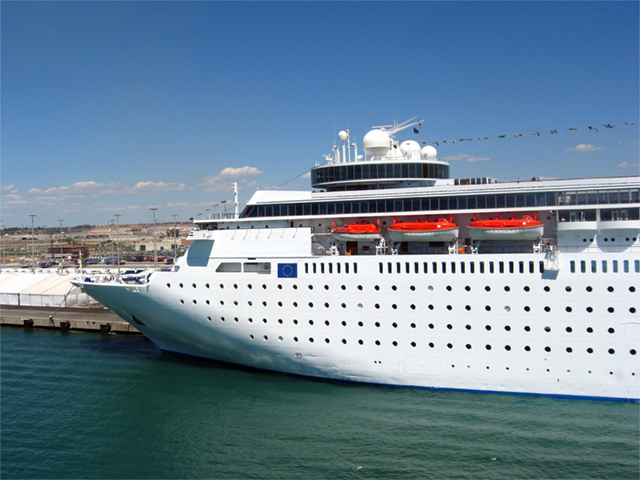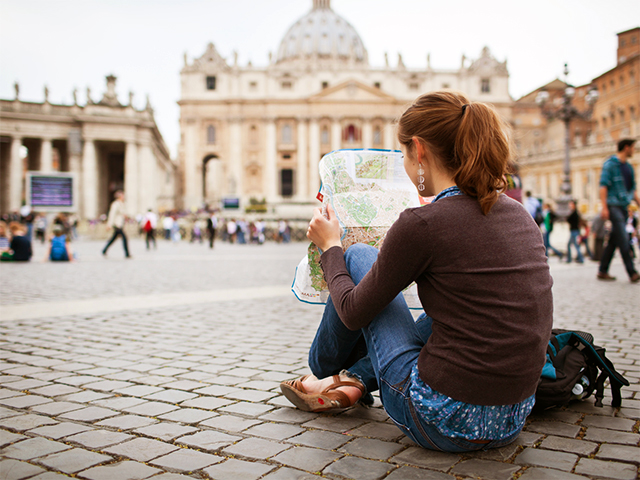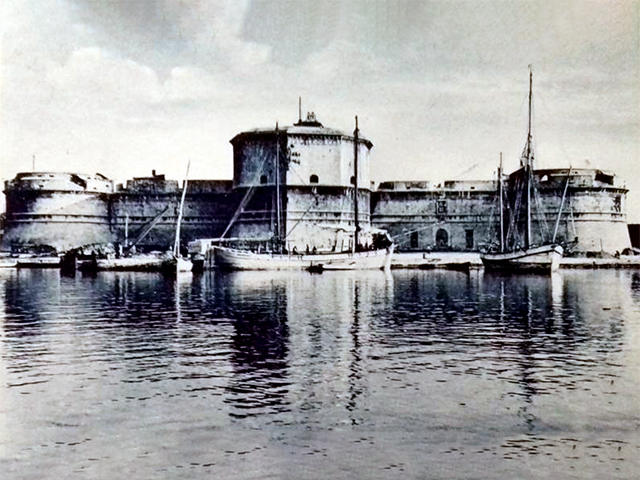Tunis Top 10: things to see and do
Tunis, most beautiful places to visit in the city and surroundings, beaches and monuments, including Al Zaytuna Mosque, the Bardo National Museum and much more.Flourished from the ashes of ancient and glourious Carthage, Tunis is a city rich in history, mistery and charm.
Ancient ruins, museums of a priceless value, white sand beaches, caotic markets, spicy flavours and mint tea: Tunis is this and much more!
Reaching this city by sea is really easy, since it is connected all year round with the Port of Civitavecchia with Grimaldi Lines and GNV ferris (click here to know all departure days and further details).
But what are the main places of interest of the city? What to see and visit? Here's an unmissable top 10 with the best of Tunis just one click away.
1. Medina and Suq (Market)
Our top 10 can only start with the famour neighbourhood of the Medina, the authentic soul of the city and the oldest part of Tunis, grown from the 698 A.D. around the Al-Zaytuna Mosque.
Declared UNESCO World Heritage Site in 1979, this labyrinthic neighbourhood winds in a thick and intrincate network of lanes and narrow streets where monuments, historical buildings, mosques and obvioulsy the typical shops of the Suq, the central market, coexist: carpets, cloths, copper, silver, ceramics, gold and any kind of goods!
Get lost among the windy and messy streets of the Medina, trade with merchants and stop for a mint tea in any of the many bars: you will travel back in time to a time lost among buildings of a rare beauty, scented spices and bright colours. It is a magical place where every situation is unpredicted and unpredictable...

The Medina of Tunis
2. Al-Zaytouna Mosque
Another unmissable stop of your journey in Tunis is beyond doubt the Great Mosque of al-Zaytouna, one of the most important places of worship of the Muslim world. The building, constructed with materials coming from the remains of ancient Carthage, is really impressive and occupies a surface of 5000 square meters.
An ancient legend goes that in the place where today stands the mosque, there was once an oratory and an olive tree, reason why it still known as the Mosque of Olive.
The'building is constituted by a courtyard of white marble surrounded by a portico, an impressive prayer room and a library with some Islamic schools, called medrasa and of course the beautiful minaret, impossible not to notice lifting the gaze towards the sky. Admission is allowed only to muslims and the only part accessible is the outdoor garden with the portico (5 dinar, approximately €2).
In the surroundings of the mosque there are many merchants of carpets that will invite you to admire the most beautiful panorama of Tunis from up one of the many terraces nearby; if you find it appropriate you can also negotiate the price of this special visit and you will have a few souvenir photos of the city from a perspective overview.
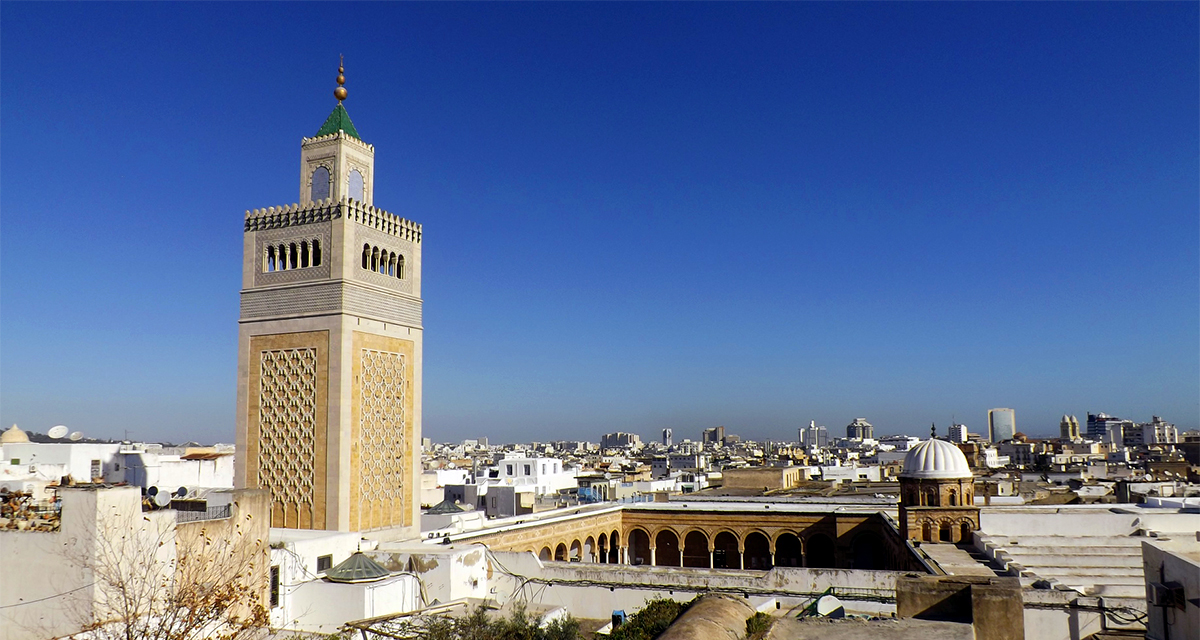
Mosque of al-Zaytouna seen from above with the minaret standing out
3. Bardo National Museum
After the brutal attack on 18th March 2015, visiting the Bardo National Museum with a plaque at the entrance with the names of the 22 victims is without doubt an experience that will not leave you indifferent. That's precisely why we believe that it is a must, as well as for its immense artistic value of the museum, also because it represents a victory of the culture against fear.
Hosted in the beautiful residence of the Bey of the nineteenth century, the museum, surrounded by a large garden, is an extraordinary example of the Arab-Muslim architecture. Inside, the world's largest collection of Roman mosaics is preserved, with works from the II century B.C. to the VII century A.D.. Also not to be missed are the collections of Greek and Islamic art.
The visit of the museum takes about 2 hours and the ticket costs 11 dinars (€5). We advise you to go early in the morning or late in the afternoon, as to avoid the crowds of tourists the core hours.

Tunis - Bardo National Museum (detail of the mosaic of the journey of Ulysses)
4. The Cathedral of St. Vincent de Paul
The beautiful Cathedral of St. Vincent de Paul, seat of the Christian community of Tunisia, certainly deserves a visit. Situated at the doors of the Medina, this church stands for the imposing Romanesque-Byzantine style and two bell towers over which stand out the domes in arabesco style.
The marble with which the structure is built comes from the mine of Djebel-oust, reopened specially for the realization of this building. Admission is through a portal with three arches surmounted by a rose window with a large cross.
Inside the cathedral you will see some large frescoes. The works were carried out in 1930 and depict the Christian martyrs of Africa, among whom you will see in the central area, S. Cyprian and St Augustine in episcopalian clothes in the act of blessing, while on the bottom of the choir you will see the statue of Our Lady of Carthage.
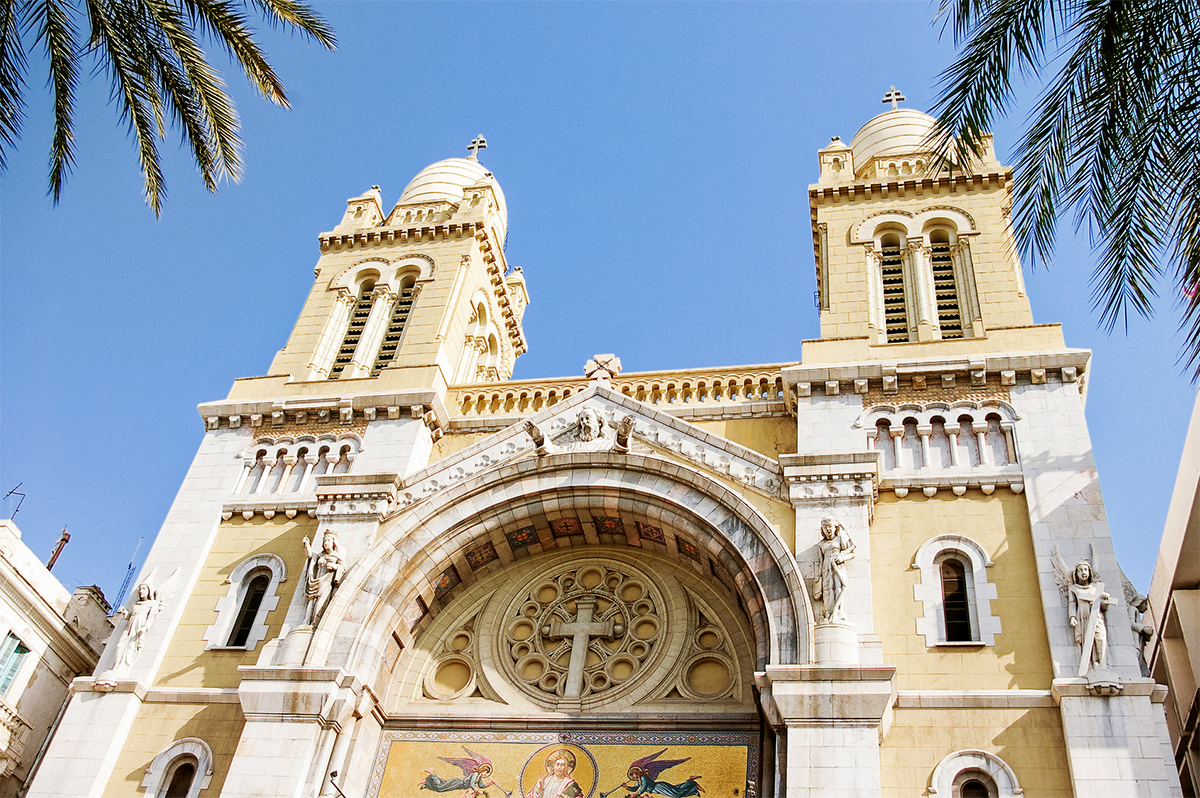
Tunis - Cathedral of St. Vincent de Paul
5. Kasbah Square
Near the west exit of the Medina, you will find yourself faced with this large square, political heart of the city and the place of birth of the Arab spring, it is located in front of the Place du Gouvermement.
Renovated in 1988, in a modern style compared to the old houses of the Kasbah, in this large square, in addition to the futuristic Monument to the Homeland, you can find also the Aziza Ottmana Hospital and Sadiki College (former madrasa).
It is the place of birth of the Arab spring and the jasmine revolution, with the City Hall and the Kasbah Mosque in the background, that you will recognize for the suggestive waving of red Tunisian flags at the center of the square.
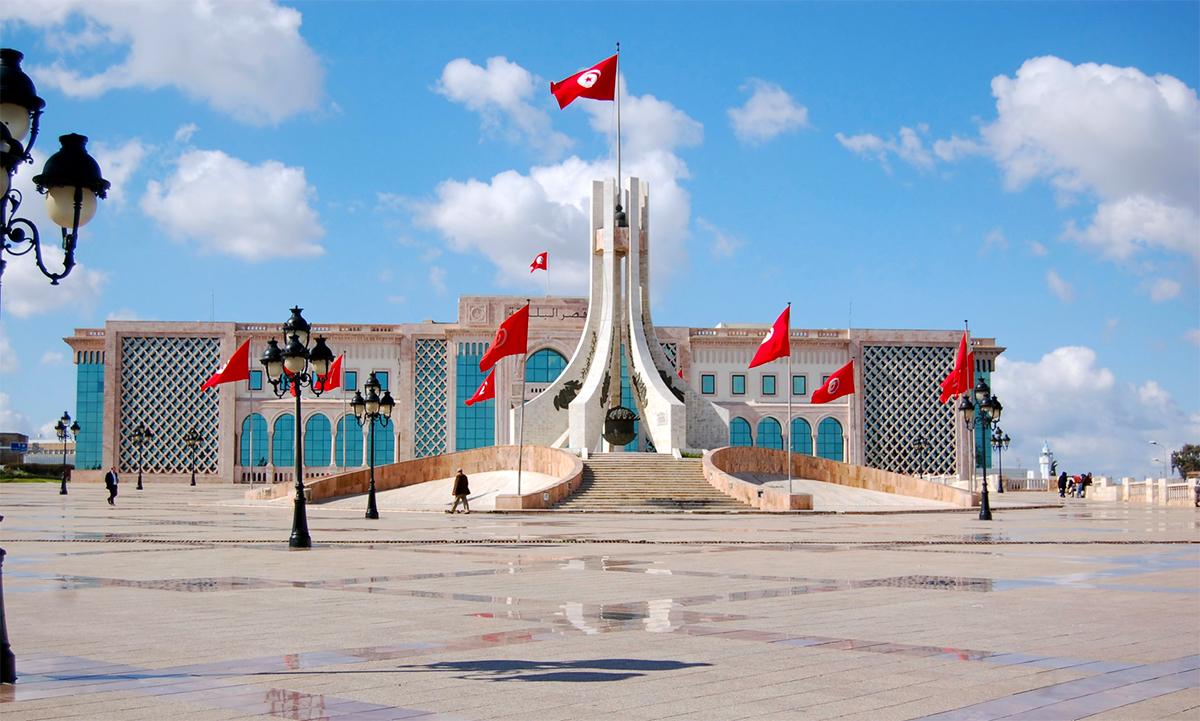
Tunis - Kashba Square
6. Belvedere Park
For a pleasant break from the hustle of the town center, we recommed you to visit the Belvedere Park, situated on the highest point of the city from where you can enjoy a beautiful view of the sea.
The park is the ideal place to take a long walk and to breathe a little fresh air immersed in the green, and also it houses the city zoo, near the shore of a small pond, the Museum of Contemporary Art and two small theaters outdoors.
We recommend it especially for families traveling with children!
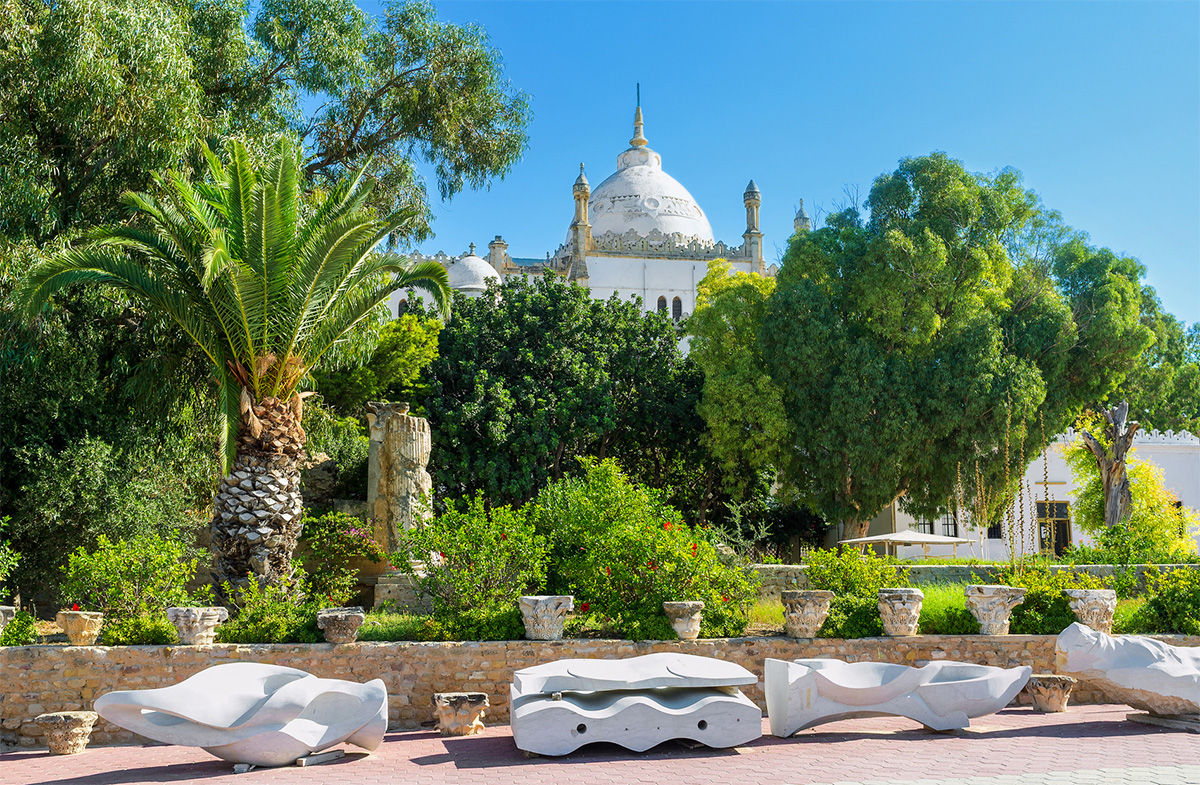
Tunis - Belvedere Park
7. Cartaghe National Museum
Founded in the 9th century B.C., Carthage was one of the most important cities of the ancient world: destroyed in 146 B.C. by the Romans and then gradually reconstructed by the same, today presents itself as an elegant residential suburb to the north east of Tunis.
The remains of the ancient city are scattered in different points but without a doubt the most interesting core and the archaeological museum are located on the hill of Byrsa, from top of which you can also admire a beautiful view of the sea.
The Carthage Museum opens all days from 8.30 am to 5.30 pm (winter) and from 8.30 am to 7.00 pm (summer), is one of the main archaeological museums in Tunisia and preserves important collections belonging to three historical periods: Phoenician-Punic, Roman and afro-Arab Muslim.
Among the most important works of art do not miss the famous roman mosaic of the Lady of Carthage dating late ancient period, important funerary masks embellished with glass beads and the "priest" and "the priestess" sarcophagi in marble, dating back to the 3rd century B.C., found in the necropolis of Rabs.

Ancient Ruins of Cartaghe (Tunis)
8. Sidi Bou Said
In the outskirts north of Carthage, about 20 km from Tunis, lies the village of Sidi Bou Said, that with its characteristic white and blue houses is also known as "White and Blue Paradise".
This small village that overlooks the Mediterranean, owes its name to Bou Said Khalaf el Beji, that withdrew there in prayer toward the beginnings of the 13th century where he remained for his entire existence. When he died, a mausoleum was built in his honor that made the village a place of pilgrimage.
The village is a real attraction for tourists from all over the world who come here to stroll around its narrow cobbled streets and to relax with the traditional mint tea and pine nuts at the Café des Nattes local, loved by the painter Paul Klee and meeting point of many artists and bohémiens who sought a refuge from the most chaotic Tunis.
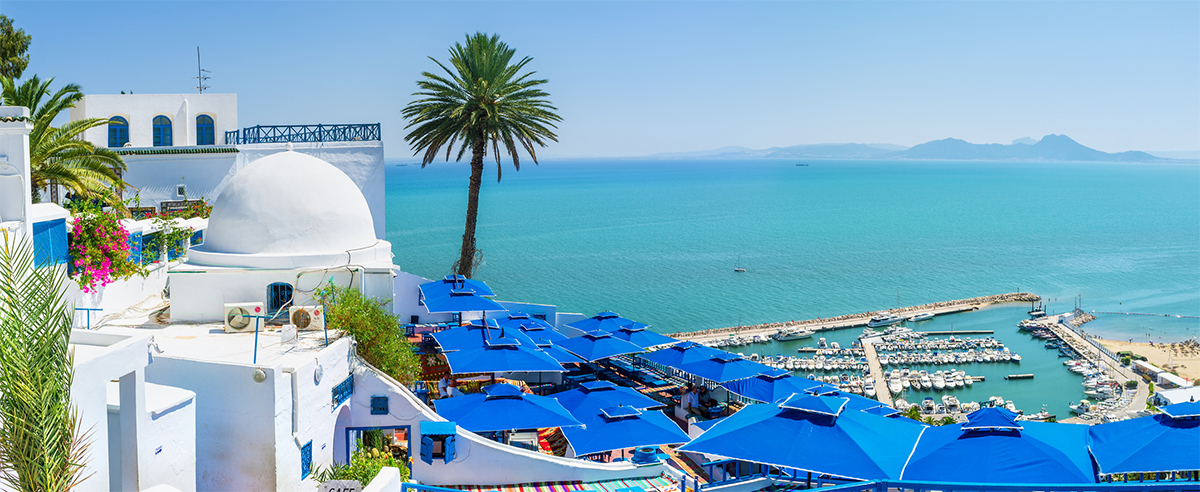
Sidi Bou Said - Tunis
9. Tunis: most beautiful beaches
What kind of holiday would it be without a little relaxation on the beach? Tunisia has really nothing to envy to other countries and it boasts a bunch of beautiful beaches, which makes it a privileged destination for all lovers of the sea and the sun.
The most sought after areas of Tunisia are without doubt the beaches of Djerba island or the coasts of Hammamet, but also near the capital, it is possible to find really interesting locations, like the Marsa with its long beach, the already mentioned Sidi Bou Said, or even Korbous with thermal baths and breathtaking views, El Haouaria with its deep waters and the characteristic Roman grotto or Bizerte with the impressive old harbor.

Tunisi: una panoramica della spiaggia della Marsa
10. Tunis: what to eat
Tunisia is also famous for its spicy cuisine and for certain dishes which have now become international, like couscous, served with meat, fish or vegetables is without a doubt the world's most famous Tunisian dish.
Other dishes that we recommend you to try there are the Ojja, a soup of scrambled eggs seasoned with harissa (chili sauce), garlic, sweet peppers, which is often served at lunch and Lablabi, simple soup with bread, wet chickpeas, dried tomatoes, and harisssa.
Instead, the most known traditional Berber dish is tajines, that is, a large omelet with spinach, beef or chicken and the right mix of spices. During your meals, at the table you will never lack olives, walnuts and fruit of the season and obviously the exquisite Tunisian dates.
At the end of a meal it is usual to serve cakes as Samsa and Halva accompanied by tea, but there are also excellent Pistachio ice creams; among the unmissable specialties there is also the Djamilah, a cake with almonds, walnuts and honey, served with some icing sugar.
Finally we would like to remind you that in Tunisia alcohol consumption is limited, but you can yet find wine, beer and other spirits in many restaurants and supermarkets. Instead, regarding water, in order to avoid unpleasant surprises, we advise you to consume only bottled mineral water.
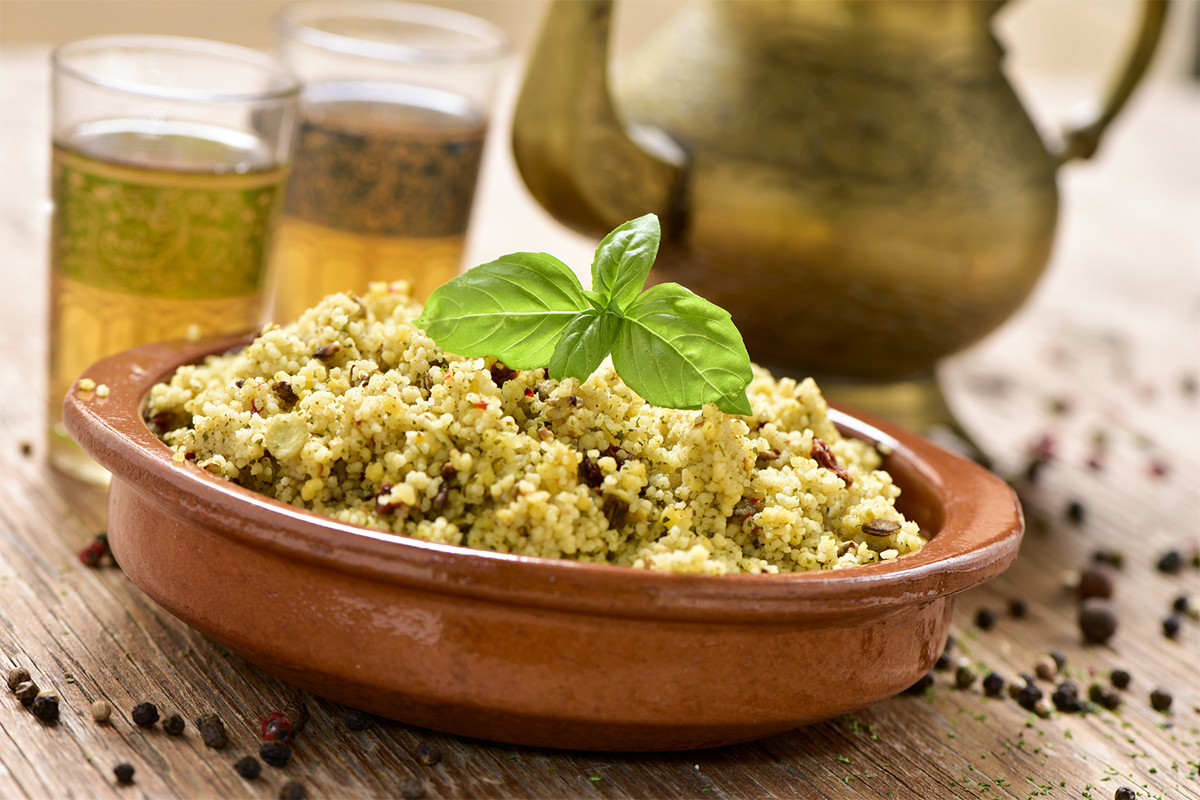
Tunis: couscous and other traditional dishes
Enjoy your trip and your holidays!
Before you travel, take a look at this page:
CIVITAVECCHIA TUNIS 2018: FERRY TIMETABLES AND DEPARTURES
Useful information
Tunisi



 PORT MOBILITY CIVITAVECCHIA
PORT MOBILITY CIVITAVECCHIA








